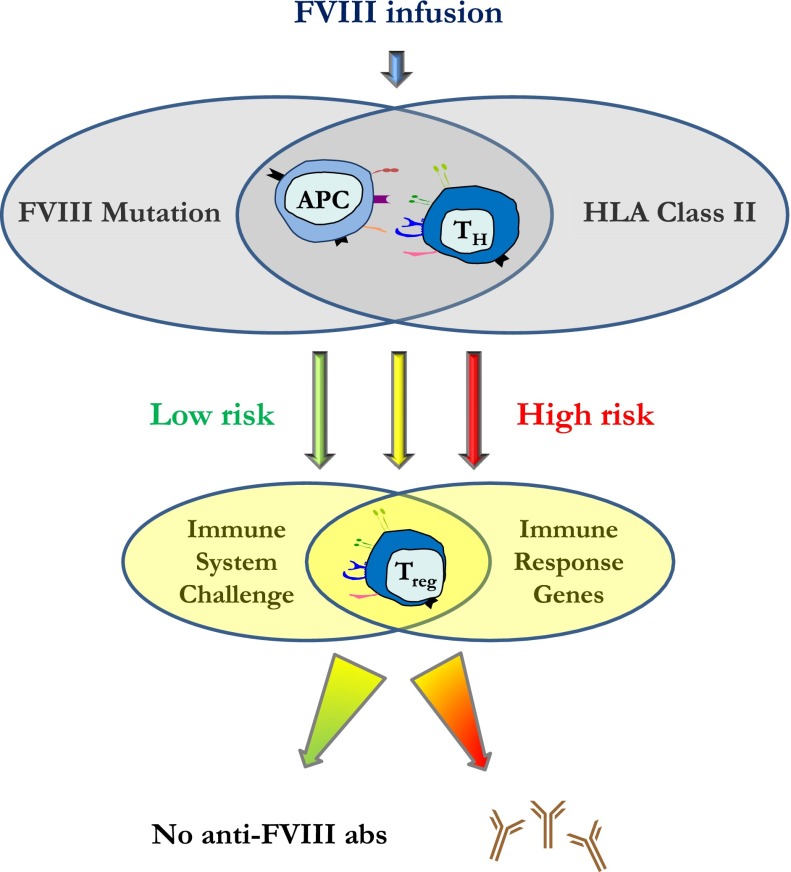Figure 1.
Schematic model of anti-FVIII inhibitor formation. The causative FVIII mutation and HLA class II will be the main contributors to the risk of development of antibodies; from very low risk (green) unlikely to experience any antibodies with commercially available FVIII concentrates to very high risk (red). The final immune response and outcome will then be fine-tuned by T-regulatory cells and a variety of immune regulatory molecules, the activity of which will be defined genetically by therapy-related factors and immune system challenges.

